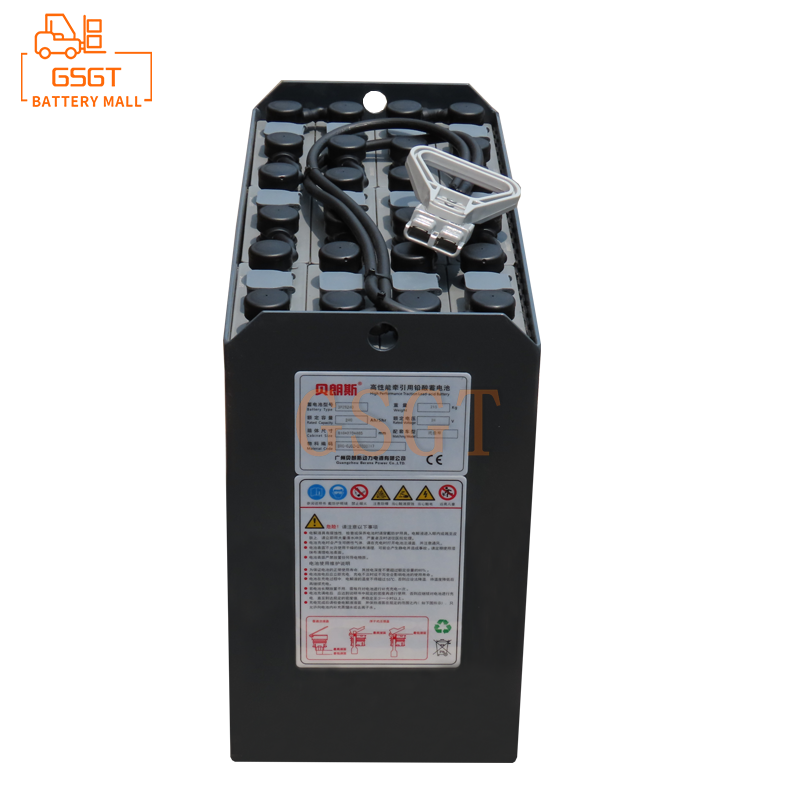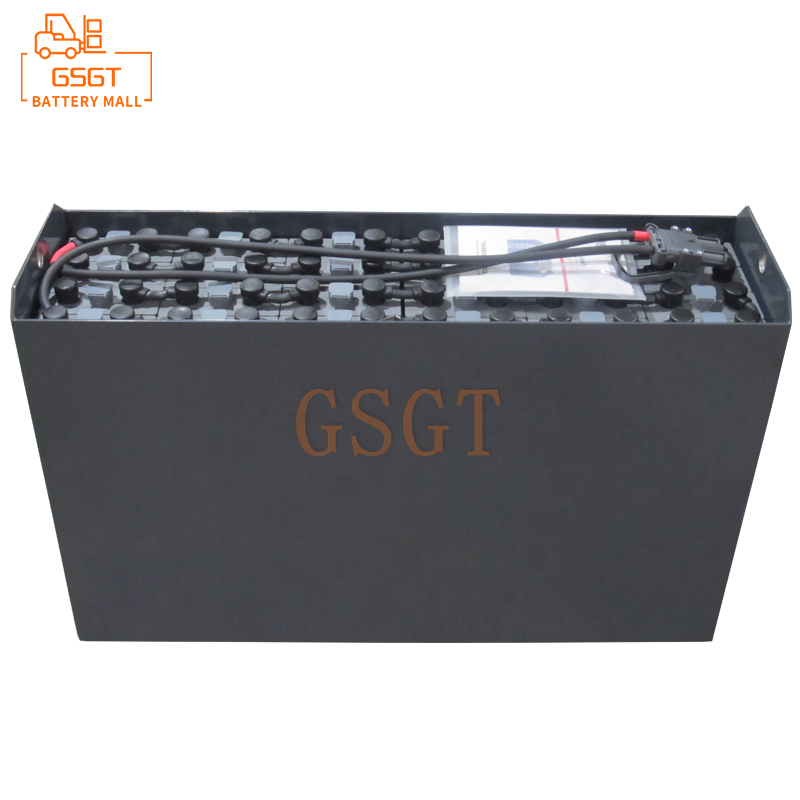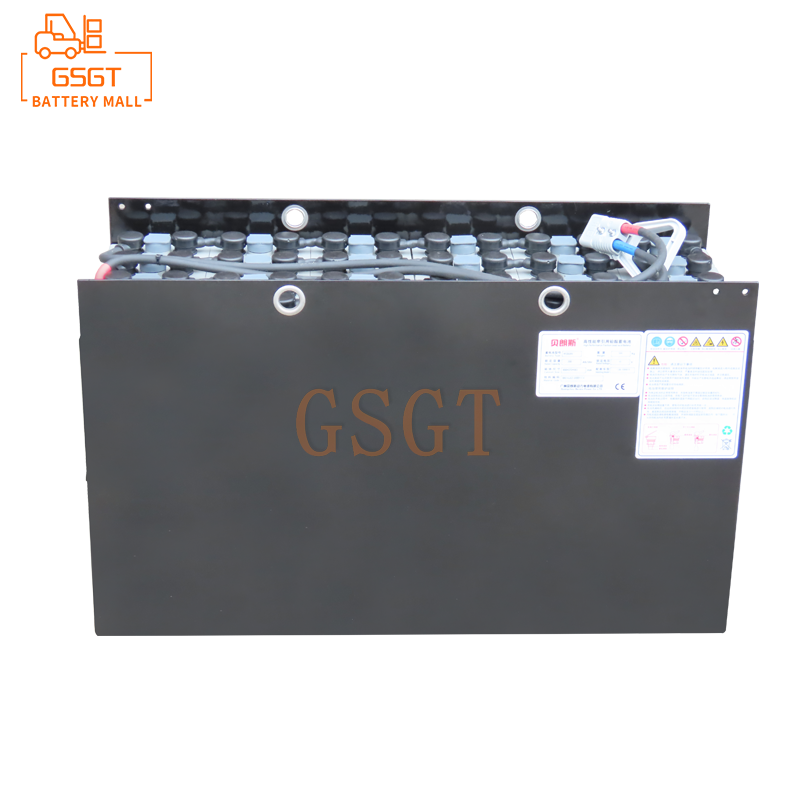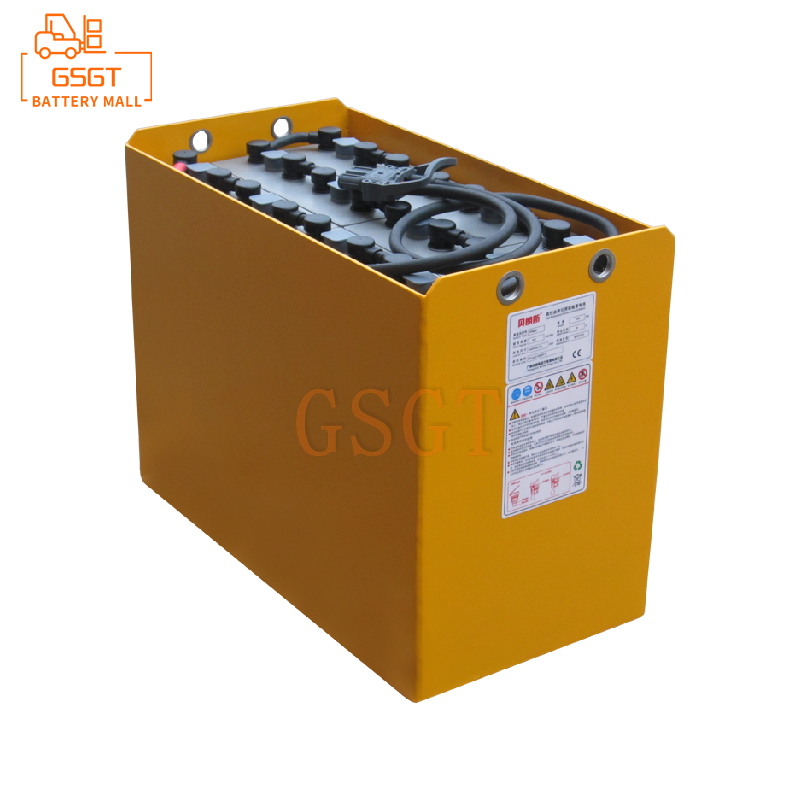Time:2025-06-13 10:16:38
Browse:599
In fields such as logistics and warehousing, and factory handling, forklifts, as important handling equipment, the performance of their power source - lead-acid batteries - directly affects the working efficiency and safety of forklifts. However, in daily use, the corrosion of the lead-acid battery terminals in forklifts is a common and intractable problem. Terminal post corrosion not only leads to an increase in battery contact resistance and a reduction in battery charging and discharging efficiency, but also may cause safety hazards such as poor contact and sparking. In severe cases, it may even shorten the battery's service life. Therefore, mastering effective methods for treating pole corrosion is of great significance for ensuring the normal operation of forklifts and reducing maintenance costs. This article will delve into the causes of lead-acid battery terminal post corrosion in forklifts and provide a detailed introduction to three practical treatment methods.
1. Analysis of the Causes of Corrosion of Lead-Acid Battery Terminals in ForkLifts
The corrosion of lead-acid battery terminals is a complex electrochemical process, mainly caused by the following reasons.
(1) Chemical reaction factors
During the charging and discharging process of lead-acid batteries, the terminal post material (usually lead or lead alloy) undergoes a chemical reaction with the sulfuric acid electrolyte inside the battery. When the battery is charged, oxidation occurs at the positive terminal post and reduction occurs at the negative terminal post. During this process, if the terminal post is poorly sealed and the sulfuric acid electrolyte overflows and adheres to the surface of the terminal post, it will continue to react with the terminal post, generating corrosion products such as lead sulfate. In addition, moisture and carbon dioxide in the air will also participate in the reaction, accelerating the corrosion process of the terminal post.
(2) Improper installation and use
When installing the battery, if the contact between the terminal post and the connecting wire terminal is not tight, it will lead to an increase in contact resistance, thereby generating heat. High temperatures will accelerate the oxidation and corrosion of the surface of the terminal post. At the same time, frequent high-current charging and discharging, over-discharging and other improper usage behaviors will also intensify the chemical reactions inside the battery, further promoting the corrosion of the terminal posts. In addition, during the operation of forklifts, vibrations are generated. Such vibrations may cause the connecting wires to loosen, allowing the terminal posts to come into more thorough contact with air, moisture, etc., and accelerating the corrosion rate.
(3) Environmental factors
The working environment of forklifts is complex and diverse. If they are in a humid environment with high concentrations of acid and alkali gases for a long time, the poles are more likely to be corroded. For instance, in some chemical plants, electroplating workshops and other places, the air contains a large amount of acidic or alkaline gases. These gases combine with the moisture on the surface of the terminal posts to form more corrosive solutions, causing severe erosion to the terminal posts.
2. Three Practical Treatment methods for the corrosion of Lead-acid Battery terminals in Forklifts
(1) Physical grinding and cleaning method
Tool and material preparation: Sandpaper, wire brushes, clean rags, protective gloves and goggles, etc. need to be prepared.
Operation steps: First, disconnect the forklift from the battery to ensure operational safety. After putting on protective gloves and goggles, use a wire brush to initially clean the surface of the pole post, removing loose corrosion and impurities on the surface. Then, select the appropriate type of sandpaper based on the degree of corrosion. Start grinding with coarse sandpaper and gradually transition to fine sandpaper. During the grinding process, be careful to avoid damaging the main body of the pole post. After grinding is completed, wipe the surface of the pole post with a clean cloth to remove any remaining debris and dust.
Principle and Effect: The physical grinding cleaning method mainly removes the corrosion products on the surface of the terminal post directly through mechanical force, restoring the metallic luster and good electrical conductivity of the terminal post. This method is simple to operate and does not require special chemical reagents. It is suitable for situations with a relatively mild degree of corrosion. After processing, the contact area between the terminal post and the connecting wire terminal increases, and the contact resistance decreases, which can effectively improve the battery's electrical conductivity. However, it should be noted that during the grinding process, the surface of the pole post may become rough, which can easily absorb moisture and impurities. Therefore, protective treatment should be carried out as soon as possible after the treatment.
(2) Chemical cleaning method
Tools and materials preparation: Prepare dilute sulfuric acid, baking soda, plastic containers, plastic brushes, clean water, clean rags, etc. Dilute sulfuric acid is corrosive. Be extremely cautious and take proper protective measures when handling it.
Operation steps: First, remove the forklift battery from the forklift and place it in a well-ventilated and safe area. Pour an appropriate amount of dilute sulfuric acid into a plastic container, and immerse the terminal post in the dilute sulfuric acid solution. The soaking time depends on the degree of corrosion, generally ranging from 5 to 15 minutes. During the soaking process, dilute sulfuric acid will undergo a chemical reaction with corrosion products such as lead sulfate on the surface of the terminal post, dissolving them. After soaking is completed, gently scrub the surface of the terminal post with a plastic brush to further remove the remaining corrosive substances. Then, rinse the terminal post with a large amount of clean water to thoroughly wash away the dilute sulfuric acid. To neutralize the remaining dilute sulfuric acid, baking soda can be dissolved in water to prepare a baking soda solution. Use a cloth dipped in the baking soda solution to wipe the surface of the terminal post, and then rinse it with clean water. Finally, dry the pole with a clean cloth.
Principle and effect: The chemical cleaning method utilizes the chemical reaction between dilute sulfuric acid and the corrosion products on the surface of the terminal post to convert non-conductive substances such as lead sulfate into soluble sulfates, thereby achieving the purpose of removing the corrosion products. Through the neutralizing effect of baking soda solution, it can be ensured that there are no residual acidic substances on the surface of the terminal post, avoiding further corrosion. This method can deeply remove the corrosive substances on the surface and in the pores of the terminal post, with a good treatment effect, and is suitable for situations with a moderate degree of corrosion. However, the chemical cleaning method requires the use of corrosive chemical reagents. Improper operation may cause harm to human health and the environment. Therefore, it must be carried out strictly in accordance with the operating procedures.
(3) Pole replacement method
Tool and material preparation: new terminals, soldering iron, solder wire, flux, wrench, screwdriver, etc.
Operation steps: First, disconnect all connections between the battery and the forklift to ensure safety. Use a wrench and a screwdriver to remove the battery casing to expose the terminal post section. Carefully separate the primary pole post from the terminal of the connecting wire, and be careful not to damage the connecting wire. If the connection between the terminal post and the battery plate is by soldering, heat the solder joint with an electric soldering iron to melt the solder, and then remove the original terminal post. Then, install the new terminal post onto the battery plate, and solder it with flux and solder wire to ensure a firm weld and good electrical conductivity. After the welding is completed, reconnect the terminal of the connecting wire to the new pole post and tighten the nut with a wrench to ensure a tight contact. Finally, install the battery casing properly and check whether all connections are correct and secure.
Principle and effect: The method of replacing terminal posts fundamentally solves the problem of terminal post corrosion by directly replacing the severely corroded terminal posts. This method is applicable when the corrosion of the terminal post is extremely severe and cannot be repaired through physical grinding or chemical cleaning. The newly replaced terminals have excellent electrical conductivity and corrosion resistance, which can significantly enhance the performance and service life of the battery. However, replacing the terminal post is a rather difficult operation, requiring certain professional skills and tools. Moreover, during the operation, special attention should be paid to avoiding battery short circuits and damaging the battery plates.
3. Preventive Measures for Corrosion of Lead-Acid Battery Terminals in Forklifts
In addition to mastering effective treatment methods, it is equally important to do a good job in the prevention of pole corrosion. During daily use, the condition of the battery terminals should be checked regularly to ensure that the terminals are tightly connected to the connection wire terminals and avoid loosening. Insulating greasing such as vaseline and butter can be applied to the surface of the terminal posts and the terminals of the connecting wires to form a protective film, preventing the sulfuric acid electrolyte and air from coming into contact with the terminal posts and slowing down the corrosion rate. At the same time, forklift batteries should be used reasonably to avoid excessive discharge and frequent high-current charging and discharging. Correct charging and discharging operations should be carried out in accordance with the battery's usage instructions. In addition, keep the working environment of the forklift dry and clean, and try to avoid the forklift operating for a long time in a humid environment with high concentrations of acid and alkali gases.
To sum up, the corrosion of the terminals of lead-acid batteries in forklifts is a problem that needs to be taken seriously. By understanding the causes of corrosion, mastering the three practical treatment methods of physical grinding cleaning, chemical cleaning and replacement of the terminal post, and taking preventive measures, the problem of terminal post corrosion can be effectively solved, ensuring the normal operation of lead-acid batteries in forklifts, improving the working efficiency of forklifts, and reducing the equipment maintenance costs of enterprises. In actual operation, the appropriate treatment method should be selected based on the specific conditions of the pole column corrosion to ensure the treatment effect and operational safety.

$800

$2530

$1630

$1690

MESSAGE
Professional And Efficient
Security
Affordable Price
Professional Services